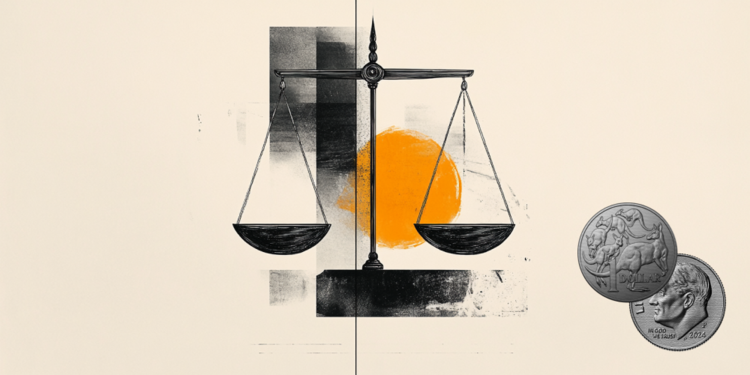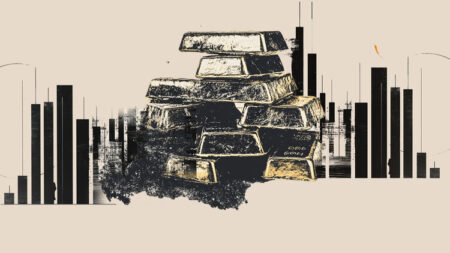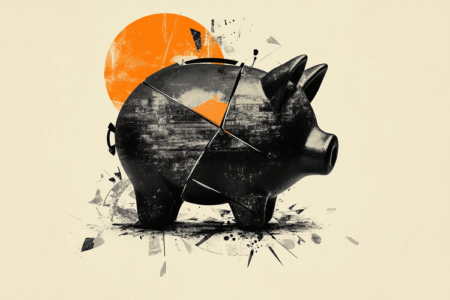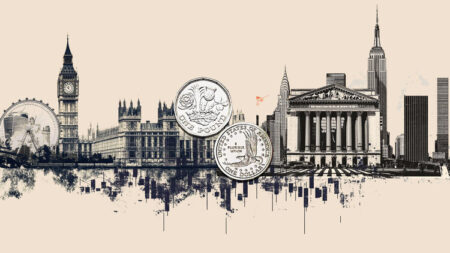- The Australian Dollar maintains its position as China plans to increase fiscal support aimed at boosting domestic consumption.
- Australia’s Consumer Price Index rose by 0.7% QoQ in Q2, compared to the expected rise of 0.8%.
- The US Fed is expected to keep its benchmark interest rate unchanged on Wednesday.
The Australian Dollar (AUD) holds ground against the US Dollar (USD) on Wednesday, halting its four-day losing streak. The AUD/USD pair maintains its position following the release of consumer inflation data from Australia.
Australia’s Consumer Price Index (CPI) rose 0.7% quarter-over-quarter in the second quarter, against the 0.9% increase in Q1 and the expected growth of 0.8%. Annually, CPI inflation eased to 2.1% in Q2, compared to 2.4% prior and below the market consensus of 2.2%.
The monthly Consumer Price Index rose by 1.9% YoY in June, compared to the previous reading of 2.1% increase. The RBA Trimmed Mean CPI for Q2 rose 0.6% and 2.7% on a quarterly and annual basis, respectively. Markets estimated an increase of 0.7% QoQ and 2.7% YoY in the quarter to June.
US Treasury Secretary Scott Bessent said that the US and China will continue talks over maintaining a tariff truce before the deadline in two weeks, and Trump will make the final decision on any extension. Bessent tamped down any expectation of Trump rejecting the extension. It is important to note that any changes in the Chinese economy could impact the AUD as China and Australia are close trade partners.
China’s Finance Minister Lan Fo’an said on Tuesday that the country will ramp up fiscal support to bolster domestic consumption and mitigate mounting economic headwinds. He emphasized that uncertainty around China’s development environment is growing and Beijing will adopt more proactive fiscal policies to help stabilise growth.
Australian Dollar moves little as US Dollar weakens ahead of Fed decision
- The US Dollar Index (DXY), which measures the value of the US Dollar against six major currencies, is halting its four-day winning streak and trading around 98.80 at the time of writing. Investors will closely monitor the US Federal Reserve (Fed) interest rate decision later on Wednesday, with no change in rates expected.
- Analysts expect the US Fed will leave its benchmark interest rate unchanged at 4.25% to 4.50% in July. Traders are now pricing in nearly a 97% odds of no change to interest rates at the July meeting, according to the CME FedWatch tool.
- The United States and European Union reached a framework trade agreement on Sunday that sets 15% tariffs on most European goods, taking effect on August 1. This deal has ended a months-long stand-off, per Bloomberg.
- Fed Governor Adriana Kugler said earlier that the US central bank should not lower interest rates “for some time” since the effects of the Trump administration’s tariffs are starting to show up in consumer prices. Kugler added that restrictive monetary policy is essential to keep inflationary psychology in line.
- San Francisco Fed President Mary Daly said that expecting two rate cuts this year is a “reasonable” outlook, while warning against waiting too long. Fed Governor Christopher Waller believes that the US central bank should reduce its interest rate target at the July meeting.
- The latest Reserve Bank of Australia (RBA) Meeting Minutes indicated that the board agreed further rate cuts were warranted over time, with attention centered on the timing and extent of easing. The majority believed it was best to await confirmation of an inflation slowdown before easing. Most members felt cutting rates three times in four meetings would not be “cautious and gradual.”
Australian Dollar finds support at 50-day EMA near 0.6500
AUD/USD is trading around 0.6520 on Wednesday. The daily chart’s technical analysis indicates a bullish bias is active as the pair remains within the ascending channel pattern. However, the 14-day Relative Strength Index (RSI) is positioned below the 50 mark, indicating a bullish outlook. Additionally, the pair remains below the nine-day Exponential Moving Average (EMA), indicating that short-term price momentum is weaker.
On the upside, the AUD/USD pair may target the initial barrier at the nine-day EMA of 0.6536. A break above this level could strengthen the short-term price momentum and support the pair to test the eight-month high at 0.6625, followed by the ascending channel’s upper boundary around 0.6700.
The AUD/USD pair could find the primary support at the 50-day EMA of 0.6503, followed by the ascending channel’s lower boundary around 0.6490. A break below this crucial support zone would weaken the medium-term price momentum and prompt the pair to approach the monthly low at 0.6454.
AUD/USD: Daily Chart
Australian Dollar PRICE Today
The table below shows the percentage change of Australian Dollar (AUD) against listed major currencies today. Australian Dollar was the strongest against the US Dollar.
| USD | EUR | GBP | JPY | CAD | AUD | NZD | CHF | |
|---|---|---|---|---|---|---|---|---|
| USD | -0.17% | -0.11% | -0.22% | -0.04% | -0.10% | -0.23% | -0.22% | |
| EUR | 0.17% | 0.09% | -0.12% | 0.11% | 0.03% | -0.06% | -0.01% | |
| GBP | 0.11% | -0.09% | -0.20% | 0.07% | -0.03% | -0.12% | -0.08% | |
| JPY | 0.22% | 0.12% | 0.20% | 0.26% | 0.19% | 0.06% | 0.07% | |
| CAD | 0.04% | -0.11% | -0.07% | -0.26% | -0.06% | -0.21% | -0.16% | |
| AUD | 0.10% | -0.03% | 0.03% | -0.19% | 0.06% | -0.09% | -0.05% | |
| NZD | 0.23% | 0.06% | 0.12% | -0.06% | 0.21% | 0.09% | 0.04% | |
| CHF | 0.22% | 0.00% | 0.08% | -0.07% | 0.16% | 0.05% | -0.04% |
The heat map shows percentage changes of major currencies against each other. The base currency is picked from the left column, while the quote currency is picked from the top row. For example, if you pick the Australian Dollar from the left column and move along the horizontal line to the US Dollar, the percentage change displayed in the box will represent AUD (base)/USD (quote).
Australian Dollar FAQs
One of the most significant factors for the Australian Dollar (AUD) is the level of interest rates set by the Reserve Bank of Australia (RBA). Because Australia is a resource-rich country another key driver is the price of its biggest export, Iron Ore. The health of the Chinese economy, its largest trading partner, is a factor, as well as inflation in Australia, its growth rate and Trade Balance. Market sentiment – whether investors are taking on more risky assets (risk-on) or seeking safe-havens (risk-off) – is also a factor, with risk-on positive for AUD.
The Reserve Bank of Australia (RBA) influences the Australian Dollar (AUD) by setting the level of interest rates that Australian banks can lend to each other. This influences the level of interest rates in the economy as a whole. The main goal of the RBA is to maintain a stable inflation rate of 2-3% by adjusting interest rates up or down. Relatively high interest rates compared to other major central banks support the AUD, and the opposite for relatively low. The RBA can also use quantitative easing and tightening to influence credit conditions, with the former AUD-negative and the latter AUD-positive.
China is Australia’s largest trading partner so the health of the Chinese economy is a major influence on the value of the Australian Dollar (AUD). When the Chinese economy is doing well it purchases more raw materials, goods and services from Australia, lifting demand for the AUD, and pushing up its value. The opposite is the case when the Chinese economy is not growing as fast as expected. Positive or negative surprises in Chinese growth data, therefore, often have a direct impact on the Australian Dollar and its pairs.
Iron Ore is Australia’s largest export, accounting for $118 billion a year according to data from 2021, with China as its primary destination. The price of Iron Ore, therefore, can be a driver of the Australian Dollar. Generally, if the price of Iron Ore rises, AUD also goes up, as aggregate demand for the currency increases. The opposite is the case if the price of Iron Ore falls. Higher Iron Ore prices also tend to result in a greater likelihood of a positive Trade Balance for Australia, which is also positive of the AUD.
The Trade Balance, which is the difference between what a country earns from its exports versus what it pays for its imports, is another factor that can influence the value of the Australian Dollar. If Australia produces highly sought after exports, then its currency will gain in value purely from the surplus demand created from foreign buyers seeking to purchase its exports versus what it spends to purchase imports. Therefore, a positive net Trade Balance strengthens the AUD, with the opposite effect if the Trade Balance is negative.
Read the full article here
















